21 innovations in science and tech that will change our world in 2021
Breakthroughs in medicine and technology, set to roll out this year, bring hope of a healthier, more entertaining future.
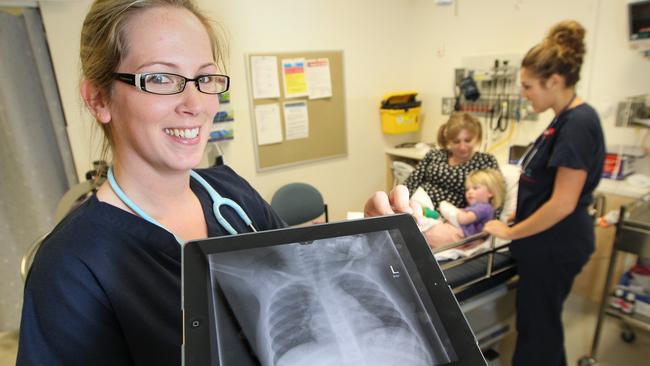
Medicine
3D printed kidneys
Almost 2000 Australians in any given year are waiting for a kidney transplant, and 12,000 more are on dialysis. Many die waiting for a kidney. But those with end-stage kidney disease may have much better prospects in coming years with expectations that 3D printed kidneys could eventually be used for transplants. Scientists at the Murdoch Children’s Research Institute have bio-printed tiny human kidneys using a stem cell paste. The mini-kidneys, just the size of a fingernail, contain thousands of tiny tubes and blood vessels and fully resemble a full-sized human kidney. As the technology comes of age it’s expected that full-sized kidneys will be able to be bio-printed and used in transplants.
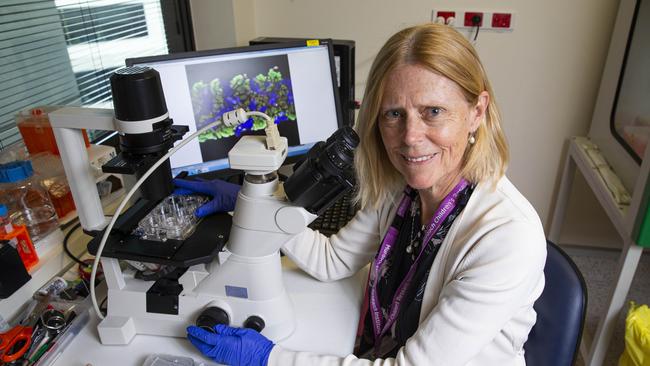
Fertility cryopreservation
When children and young people are diagnosed with cancer, their parents are confronted not only with their child’s mortality but also difficult decisions about preserving future fertility.
One choice open to parents is to have part of their child’s ovarian or gonadal tissue removed and frozen for future use. The technique was until recently considered experimental, but ovarian tissue grafting has resulted in the birth of several babies in Australia in recent years. Slices of the tissue are implanted into the abdomen or pelvis, where it regrows and has the capacity to reverse menopause, releasing eggs that can then be fertilised via IVF.
In 2021 ovarian grafting will be available to young people around Australia with the formation of the National Ovarian and Testicular Transport and Cryopreservation Service.
Doctors who extract ovarian tissue can now transport it for storage at the Royal Women’s Hospital in Melbourne, where it can be used many years later in grafting procedures.
Messenger-RNA vaccines
As soon as it became clear that the spread of the novel coronavirus would become a pandemic, scientists began frantically working to create vaccines.
Time was of the essence, and mRNA and DNA vaccines were well-placed to be developed the quickest, due to the speed of genetic sequencing that allows scientists to custom-design a vaccine candidate in a matter of weeks.
Gene-based vaccines work on COVID-19 by instructing the body to make the coronavirus’s spike protein in its own cells. The spike protein then gets exported from the cells, triggering an immune response. An mRNA vaccine has never before been licenced for use, but COVID-19 has seen a massive investment in the technology, which has shown up to 95 per cent efficacy in clinical trials. Two mRNA vaccines are now set to be approved by the Food and Drug Administration in the United States, ushering in an exciting new era for vaccine technology.
CRSPR-based detection of COVID-19
Researchers at Stanford University have developed a CRISPER-based “lab on a chip” to detect COVID-19, which is likely to be commercialised and used around the world in 2021 for the rapid detection of the disease. CRISPER is a technology that can be used to edit genes, and the lab-on-a-chip test uses electric fields to purify fluids from nasal swab samples. Using the CRISPER enzyme Cas12, the test triggers a fluorescent molecular probe that causes samples to glow when genetic material derived from the coronavirus is found.
Anti-cancer vaccine
What if there was a generic vaccine that could prevent all cancers? That could soon be a reality as the result of an extraordinary research project being undertaken by scientists from the medical research institute WEHI, RMIT and the University of NSW. The scientists are studying 16 “super-survivors” who have been diagnosed with multiple forms of rare cancer but survived them all.
Through genetic sequencing of these patients’ tumours, the scientists are aiming to identify what it is about the responses of the patients’ bodies to genetic mutations in cancer cells that halts the cancer from spreading.
Once they identify these common sequences of amino acids, they will be able to use the identified peptides to create a vaccine that could prevent many different types of cancer.
Telemedicine
The COVID-19 pandemic has brought devastation, but it’s also radically transformed our health system in far-reaching ways. The biggest innovation ushered in by the pandemic has been the widespread uptake of telemedicine. No longer does the need to see a doctor mean travelling to the surgery.
Prior to COVID-19, virtual attendance at medical appointments was limited to remote-based residents and those in aged care, and accounted for only 0.1 per cent of all Medicare-funded episodes of medical care.
Now, telemedicine is available to all and will become a permanent part of Australia’s health system in 2021. Consumers have embraced the change, with an extraordinary more than 40 million telehealth consultations billed to Medicare so far this year.
The shift to digital healthcare has even seen the advent of virtual hospitals, opening up advanced specialist care to those who cannot travel to major centres.
Bionic spines
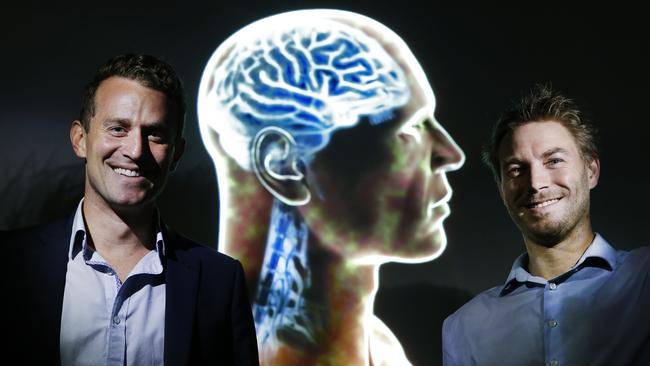
Quadriplegics in Victoria are set to trial the world’s first “bionic spine”, which could see those who are paralysed given the chance to move robotic limbs through the power of thought. The technology uses a paperclip-sized device, which is fed through a vein in the chest up to the centre of the brain, where it implants into tissue, translating and transmitting brain signals directly to an external computer. The patient’s thoughts can then be used to operate robotic limbs or even mobile phones.
The device is set to transform the lives not only of quadriplegics but also those paralysed after stroke, as the result of cerebral palsy, or those suffering motor neurone diseases.
Alzheimer’s blood test
A simple blood test to detect Alzheimer’s disease could be developed as early as 2021 after scientists accurately predicted the presence of the neurodegenerative disorder in the brains of sufferers by measuring concentrations of a protein biomarker in the blood.
The blood test, that measures levels of a protein in the blood known as the tau protein, could detect the disease developing in the brains of patients up to 20 years before symptoms develop. That would pave the way for early drug therapy that could dramatically reduce the severity of the brain degenerative disease
Pancreatic cancer therapy
Pancreatic cancer has one of the poorest survival rates of all cancers, with only one in five sufferers still alive five years after their diagnosis. The cancer is deadly unless caught early. But a new drug which is entering clinical trials in 2021 could provide hope for pancreatic cancer patients.
It’s known as AMP945, and it works by targeting a protein in the cancer cell known as FAK.
The FAK protein helps the cancer form a protective or fibrotic scar-like layer around the cancer cell, which is difficult for chemotherapy drugs to penetrate. By working to break down the FAK protein, it’s expected that chemotherapy will prove much more effective in treating pancreatic cancer.
The drug has been developed by a team of Australian scientists working under the Cancer Therapeutics Co-operative Research Centre.
Cancer Immunotherapy
Immunotherapy has already transformed the treatment of many cancers, and 2021 will see the field come of age even further. Immunotherapies are a form of biotherapy that use materials from living organisms to fight disease. The most exciting area of immunotherapy research is gene therapies, where genetic engineering is used to enhance immune cells’ cancer-fighting capabilities. Immunotherapies are increasingly being used in the treatment of breast cancer and melanoma, and new drugs have now been approved for immunotherapies for a host of other cancers including brain cancer, colorectal cancer and lymphoma.
Hope for ovarian cancer
In 2021, thousands of Australian women will have cheap access to the ovarian cancer drug Lynparza, which is effective as a maintenance treatment for ovarian cancer. The drug previously cost more than $140,000 per course. The drug will be available to women with advanced BRCA-mutated ovarian, fallopian tube or primary peritoneal carcinoma. Ovarian cancer is one of the most deadly cancers, with a vie-year survival rate of less than 50 per cent.
Natasha Robinson
-
Technology
5G and mmWave rollout
Although the subject of plenty of conspiracy theories, 5G is still limited in 2020.
Not everyone has a 5G phone and the rollout of 5G networks is ongoing. 5G speeds can vary widely in a few metres. In 2021 there will be consolidation. Speeds will be more reliable as denser 5G infrastructure is added to serviced areas — in a significant development, the government will auction the very fast 5G network bandwidth (mmWave) to telcos in March. Mmwave will comfortably serve densely populated locations, such as stadiums, airports and city areas, and will aid the rise of e-commerce by phone at sporting events.
More localised electric transport
2020 has spurred big growth in eBike sales and this will continue in 2021 with local councils increasing installing bike lanes and bikeways. We’re likely to see eBikes used even more in commerce, for food and other delivery services. However, there is an urgent need to address safety concerns.
Electric scooters and even electric skateboards will be increasingly used for short-range commuting. More car makers will manufacture hybrid and electric cars. Volvo for example says it will start building electric motors in-house. There’s more than a dozen new battery technologies in development and some may come to fruition in 2021.
Business embracing video comms
As the pandemic took hold there was a huge take-up in video calls — Zoom, Facebook Messenger, Cisco Webex, Google Meet and Microsoft Teams were the most popular. Regardless of Zoom’s rocky ride on the sharemarket, that need will only grow further in workplaces now that business understands first-hand how virtual meetings work and their value in reducing staff travel budgets. Microsoft, Cisco and Google already sell whiteboards and dedicated devices that facilitate video calls. Facebook has released its Portal devices for Messenger video calls including between TVs. There are Zoom conferencing systems and offices are installing video booths for office-to-office communications.
Health-focused personal tech devices
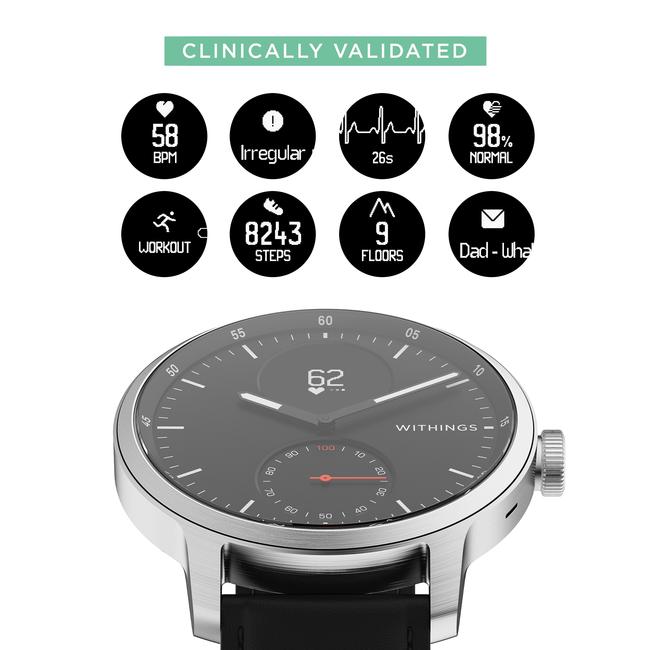
We can confidently predict that health monitoring personal tech will be more widely used in 2021. Watches by Apple, FitBit and Garmin offer heart rate monitoring. Recently Withings released its ScanWatch which monitors heart rate around the clock, along with irregular low and high heart rates over time, and purports to detect atrial fibrillation (AFib). It has a blood oxygen (SpO2) monitor that helps detect breathing irregularities and sleep apnoea, and monitors sleep. Withings obtained accreditation for much of this functionality from the Therapeutic Goods Association. Expect devices also to increasingly interpret the data and explain your health status rather than just spray out a fire hose of numbers.
Short-throw projectors and TVs
We’re used to projectors beaming light from across a room. Now, projectors that beam light from underneath walls are becoming popular as stand-alone devices and TVs. They are less expensive too. Hisense, which produced Laser TVs with a projector and screen, is now promoting its L5 series which projects TV onto a regular wall or an optional 100-inch screen. Epson’s short-throw projectors start at $1099 and can be as close as 30cm from a wall. Its ultra short throw projectors start at $2000 and you get an 80-inch screen in the deal. Epson EH LS300B offers TV for $5700 packaged with a 120-inch screen.
Higher artificial intelligence
We’ve seen AI used in cameras for face recognition, and for recognising visual elements of a photo and enhancing them, such as clouds versus trees and rivers. AI increasingly interprets language and aids data analysis. AI now works out what you intend searching for in Google searches and doesn’t simply rely on keywords. This capability will expand in 2021. Chatbots on retail sites will develop more smarts too. Drones will increasingly use AI in surveillance, to identify disease in crops but in the pandemic, they’ll be able to check the temperatures of people from the sky.
AI will predict outbreaks and spreads. In cybersecurity it will increasingly detect hackers by observing subtle changes in network traffic.
Next gen gaming consoles
Sony and Microsoft have released new gaming consoles: the Sony PlayStation 5 and Microsoft Xbox Series S and Series X. This might not seem like a world-changing development until you consider that the US video game market juggernaut is expected to surpass $210bn by the end of 2023, according to games insight company Newzoo.
The first games on the new console are available but the big take up is likely to come in 2021 as more titles become available. The PS5’s big attraction is its console with haptic feedback that lets you “feel” your gameplay. You can feel the environment shake during an explosion or the tension build in a trigger as you draw a bow. Games load quickly. The Xbox Series S delivers 4K games at up to 120 frames per second and offers DirectX Raytracing, faster loading, and spatial audio.
Gallium nitride (GaN) gadget chargers
These small, fast charging plug-in power adaptors will increasingly replace brick-style chargers for laptops and large electronics. — making even big devices more portable. Plug in a GaN charger, and you can use a standard USB-C cable to fast charge your device.
GaN chargers are typically 30, 60 or 100 watts, but some are 200 Watts and support multiple USB-A and USB-C charging. HyperJuice’s stackable GaN chargers support up to 1600 watts and simultaneously charge through 48 USB-C ports. Belkin offers GaN chargers in Australia.
Apple M1 chip
Apple has recently released a new 13-inch MacBook Air and MacBook Pro, and a Mac mini that uses its new M1 chip.
It’s the first time in 15 years that Apple has used its own chip in a Mac rather than rely on chips by Intel. The result is an almost universally acclaimed boost in performance on otherwise entry level computers. For example, the entry level Mac mini computer costing $1099 can comfortably edit 8K video. Apple’s M1 chip and its successors stand to transform entry level computing, and increase the performance of even more powerful Apple Macs in 2021.
Virtualised training systems
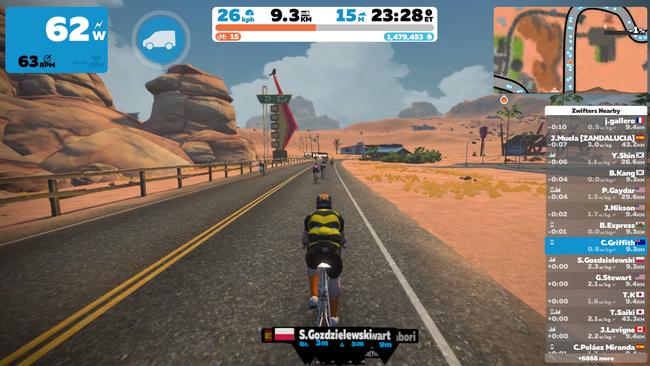
A new frontier in sports training and exercising opened during the pandemic thanks to the video game-like system Zwift. We cycled our way along graphic representations of roads in the UK, US and Europe, all the while our bike was stationed in front of a TV.
You can plan virtual road trips, and ride with other Zwift users training elsewhere in the world. Expect more systems like this. Zwift has more than half a million users and passed $US1bn in value around September after raising $US450m from investors. Rouvy, Sufferfest and FulGaz are among alternatives. Virtualised training, already used for running and rowing, will spread to more sports, and households.
Chris Griffith
